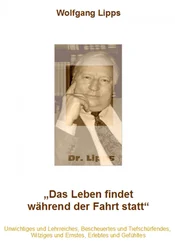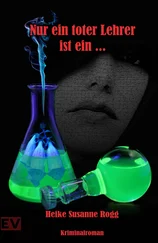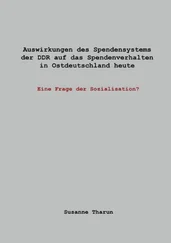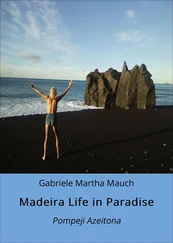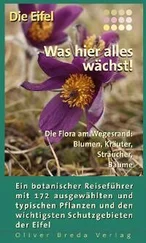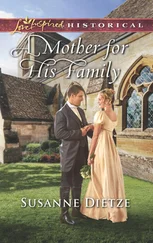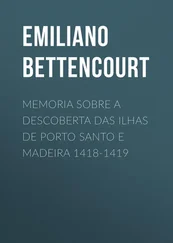
Table of Contents
The Author 6 The Author Dr. Susanne Lipps is successful author of a number of travel and walk-ing guides about Madeira, the Canary Islands, Spain and Portugal. After having studied Geography, Geology and Botany in Marburg (Germany), she graduated in 1985. Since 1988 she works as tour guide and freelance author and travels regularly to the island of Madeira. All items in this book have been carefully enquired and checked to the best of our knowledge. The use of this book is at one’s owne risk. Author and publisher will not assume any liability for possible damages or prejudices of any kind. Legal Notice Layout: Günther Roeder, Oliver Breda Photographs: Susanne Lipps, Oliver Breda Type set in TheSans from LucasFonts Production: Druckerei Hellendoorn, Bad Bentheim Translation: Daniela Overkamp © Oliver Breda Verlag, Duisburg www.bredaverlag.de ISBN 978-3-938282-10-6 (ebook edition) ISBN 978-3-938282-09-0 (print edition) No part of this publication may be reproduced, recorded or processed by means of electronic systems without the prior permission of the publisher.
Legal Notice 6 The Author Dr. Susanne Lipps is successful author of a number of travel and walk-ing guides about Madeira, the Canary Islands, Spain and Portugal. After having studied Geography, Geology and Botany in Marburg (Germany), she graduated in 1985. Since 1988 she works as tour guide and freelance author and travels regularly to the island of Madeira. All items in this book have been carefully enquired and checked to the best of our knowledge. The use of this book is at one’s owne risk. Author and publisher will not assume any liability for possible damages or prejudices of any kind. Legal Notice Layout: Günther Roeder, Oliver Breda Photographs: Susanne Lipps, Oliver Breda Type set in TheSans from LucasFonts Production: Druckerei Hellendoorn, Bad Bentheim Translation: Daniela Overkamp © Oliver Breda Verlag, Duisburg www.bredaverlag.de ISBN 978-3-938282-10-6 (ebook edition) ISBN 978-3-938282-09-0 (print edition) No part of this publication may be reproduced, recorded or processed by means of electronic systems without the prior permission of the publisher.
Table of Contents 7
Introduction 8
Hints for the Usage of this Book 9
In the Gardens 11
Vegetation in Coastal Areas 61
Along the Levadas 89
In the Laurel Forest 119
On Cliffs and in the Mountains 157
Crops and Fruits 171
Gardens and Parks 189
Register 200

Introduction
Madeira definitely deserves its cognomen “Flower Island”. In a very confined space there are growing plants from all regions of the earth. Wherever you go numerous plants, both known and unknown will surround you. The botanical guide “Madeira- A Botanical Melting Pot!” is directed to everyone who visits the island and is interested in its flora. The format of the book was chosen to make it possible for everybody to carry it with him/her without being bothered.
Arriving on Madeira you will probably experience the sumptuous flora for the first time in the hotel garden. In the following days you can visit the numerous parks that are all well worth seeing. Colourful plants, most of them native to the tropics, thrive in all of them.
Definitely worth visiting regions with particular vegetation are to be found along the coast. You will find a more inconspicuous but nevertheless interesting flora. Outside the towns the indigenous flora is often well preserved and mixed with numerous foreign species from distant lands.
Eye-catching hotchpotches of different plants are to be found along the famous irrigation channels (levadas) and tiny terrace fields. Strollers and hikers will encounter exotic tropical and subtropical plants next to familiar ones that also grow in British
and Central European gardens
In contrast to the vegetation form described earlier, the laurel forest has remained a nearly unspoiled jungle. Apart from the various members of the Laurel family you will encounter numerous trees, shrubs and herbs that have adapted to the humid conditions. Ferns, mosses and lichens give this biotope its somehow primeval appearance. Hikers find a network of paths in the laurel forest.
Rocks characterize the bleak landscape in the centre of the island where you will find heath forests and moors. A sparse, alpine flora populates both steep rocks around the highest mountain peaks and rocky sites at lower altitudes. Finally we should not forget the useful plants that are cultivated on Madeira. Many tropical fruits are grown and sold on the markets. Bananas and sugar cane are of special importance. Apparently familiar plants present themselves in different forms on Madeira.
All in all you will experience the abundance of most different plants on Madeira yourself when you visit the island. The plants that are described in this book can thus only be a selection, completeness can not be claimed. Anyway there are indicated most of the plants that you will encounter during your holiday on Madeira.
We wish you a pleasant stay!
Susanne Lipps and Oliver Breda
8

Hints for the Usage of this Book
The botanical guide “Madeira- A Botanical Melting Pot!” contains plant descriptions that are organized in six typical groups. The chosen order corresponds to the order in which the visitor will probably encounter the respective flora: exotic plants introduced from tropical and subtropical countries in gardens and parks, wild growing vegetation in coastal areas, flora of cultivated land and along irrigation channels (levadas), vegetation of the laurisilva / laurel forest, flora in the mountains and on rock faces, typical useful plants.
There may be plants that cannot be clearly assigned to one of the chapters. They will be described with the vegetation form that is their most typical habitat. In order to not oversize the book you will not find descriptions neither of plants that were introduced to Madeira from Europe (maples, oaks, firs) nor of ornamental plants that are commonly known (geranium, narcissus, etc.)
Within the different chapters the plants are organized from big to small. The details about the bloom time are guidelines. The climate on Madeira is very uniform; thus it is possible that several specimens of various species bloom at all times of the year (especially in years with an unusual weather development). You should be able to clearly identify the plants on the basis
of the images and the pieces of information that are given about their characteristics, even if you don’t have any special botanical knowledge. The site details offer information about sites where you can easily encounter the respective plants. The plant descriptions are completed with interesting facts that are directly or indirectly linked with the plant in question.
The last chapter is dedicated to Madeira’s most beautiful parks. There you find information about the history of each garden, a detailed description and supplementary facts about opening hours, prices and how to get there by bus or by rented car.
You will need a map of the island to find the parks and the sites that are indicated within the plant descriptions. Tour operators and hotels hand out general maps and a map of Funchal to their guests. It is also available free of charge in the tourist offices and will do for gaining a first overview. The Walking map of Madeira 1:50000 by Goldstadt is more detailed and also suited as a road map. It is available in many Madeiran bookstores.
Читать дальше



